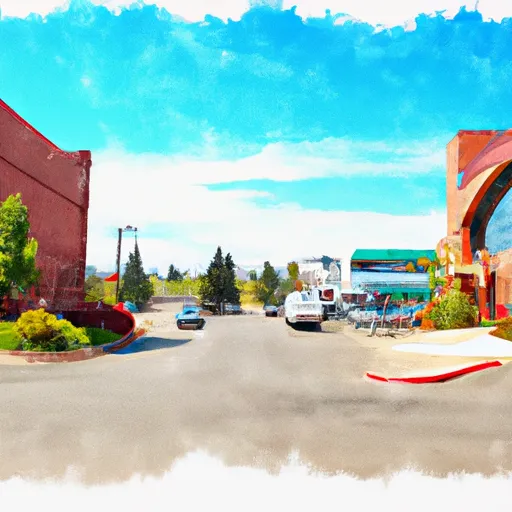-
 Snoflo Premium
Snoflo Premium
Get unlimited access to all our content
With no Ad interruptions! - Start Your Free Trial Login with existing account
Mesa
Eden Index
Climate
7.1
•
Recreation
2.0
•
Community
0.7
•
Safeguard
3.7/10

Mesa, Washington is a small town located in Franklin County, in the southeastern part of the state. The climate in Mesa is considered semi-arid, with hot, dry summers and mild winters. Summers can see temperatures reaching the high 90s, while winter temperatures average in the 30s. Precipitation is minimal, with most rainfall occurring during the winter months.
As for hydrology constituents, Mesa is situated near the Columbia River, which provides a source of water for the region's agriculture. The river also offers opportunities for boating, fishing, and other water-related activities.
Outdoor recreation opportunities in Mesa and the surrounding area are abundant. The region is known for its vast open spaces and stunning natural landscapes. Hiking and camping enthusiasts can explore nearby parks and trails, such as the Juniper Dunes Wilderness or the Saddle Mountains. The area is also popular for off-roading, with numerous trails for ATV and dirt bike enthusiasts. Additionally, Mesa is located near the Hanford Reach National Monument, a protected area offering opportunities for wildlife viewing, birdwatching, and more.
What is the Eden Index?
The Snoflo Eden Index serves as a comprehensive rating system for regions, evaluating their desirability through a holistic assessment of climate health, outdoor recreation opportunities, and natural disaster risk, acknowledging the profound impact of these factors on livability and well-being.
Climate Health Indicator (CHI): 7.1
Mesa receives approximately
227mm of rain per year,
with humidity levels near 84%
and air temperatures averaging around
11°C.
Mesa has a plant hardyness factor of
7, meaning
plants and agriculture in this region tend to thrive during the non-winter months.
By considering the ideal temperature range, reliable water supplies, clean air, and stable seasonal rain or snowpacks, the Climate Health Indicator (CHI) underscores the significance of a healthy climate as the foundation for quality living.
A healthy climate is paramount for ensuring a high quality of life and livability in a region, fostering both physical well-being and environmental harmony. This can be characterized by ideal temperatures, reliable access to water supplies, clean air, and consistent seasonal rain or snowpacks.
Weather Forecast
Streamflow Conditions
Upper Columbia
Area Rivers
Upper Columbia
Snowpack Depths
Upper Columbia
Reservoir Storage Capacity
Upper Columbia
Groundwater Levels
Recreational Opportunity Index (ROI): 2.0
The Recreational Opportunity Index (ROI) recognizes the value of outdoor recreational options, such as parks, hiking trails, camping sites, and fishing spots, while acknowledging that climate plays a pivotal role in ensuring the comfort and consistency of these experiences.
Access to outdoor recreational opportunities, encompassing activities such as parks, hiking, camping, and fishing, is crucial for overall well-being, and the climate plays a pivotal role in enabling and enhancing these experiences, ensuring that individuals can engage in nature-based activities comfortably and consistently.
Camping Areas
| Campground | Campsites | Reservations | Toilets | Showers | Elevation |
|---|---|---|---|---|---|
| Corral Lake - WDFW | None | 977 ft | |||
| Heart Lake - WDFW | None | 980 ft | |||
| Lyle Lake - WDFW | None | 953 ft | |||
| Warden Lake North - WDFW | None | 1,072 ft | |||
| Lind Coulee Island Site WDFW | None | 1,054 ft | |||
| Hood Park | None | 352 ft | |||
| Glen Williams - WDFW | None | 1,050 ft | |||
| Lind Coulee West Bridge Site WDFW | None | 1,053 ft | |||
| Columbia Park | None | 355 ft | |||
| Ringold Springs - WDFW | None | 400 ft |
Nearby Ski Areas
Catastrophe Safeguard Index (CSI):
The Catastrophe Safeguard Index (CSI) recognizes that natural disaster risk, encompassing floods, fires, hurricanes, and tornadoes, can drastically affect safety and the overall appeal of an area.
The level of natural disaster risk in a region significantly affects safety and the overall livability, with climate change amplifying these risks by potentially increasing the frequency and intensity of events like floods, fires, hurricanes, and tornadoes, thereby posing substantial challenges to community resilience and well-being.
Community Resilience Indicator (CRI): 0.7
The Community Resilience Indicator (CRI) recognizes that education, healthcare, and socioeconomics are crucial to the well-being of a region. The CRI acknowledges the profound impact of these elements on residents' overall quality of life. By evaluating educational resources, healthcare accessibility, and economic inclusivity, the index captures the essential aspects that contribute to a thriving community, fostering resident satisfaction, equity, and social cohesion.

